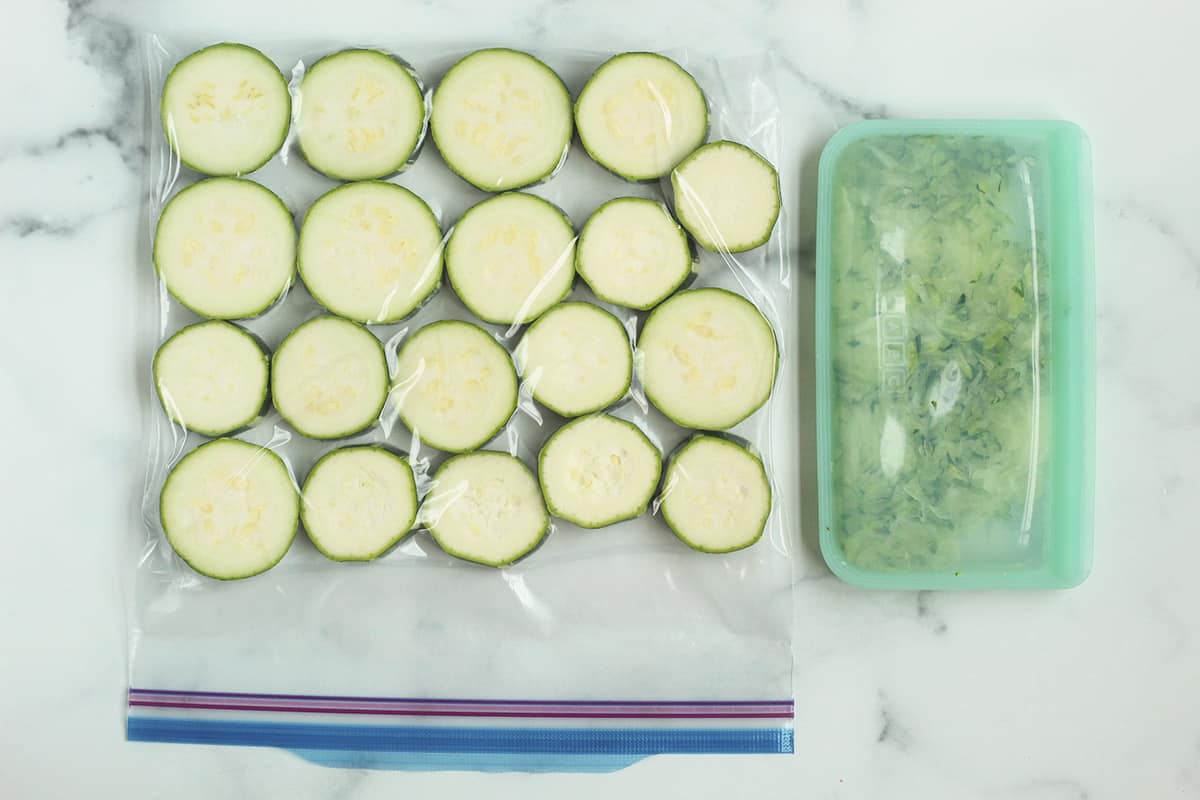

Articles
How To Store Zucchini In Freezer
Modified: May 1, 2024
Learn how to store zucchini in the freezer with these helpful articles. Keep your zucchini fresh and delicious all year round.
(Many of the links in this article redirect to a specific reviewed product. Your purchase of these products through affiliate links helps to generate commission for Storables.com, at no extra cost. Learn more)
How To Store Zucchini In Freezer
Zucchini is a versatile and nutritious vegetable that is beloved by many. Whether you have a surplus of zucchini from your garden or bought too much at the farmer’s market, freezing is a great way to preserve it for later use. Freezing zucchini allows you to enjoy this summer squash all year round, whether you use it in soups, stir-fries, or even baked goods. In this article, we will explore the step-by-step process of properly storing zucchini in the freezer.
Choosing the right zucchini
When selecting zucchini for freezing, it is important to choose ones that are firm and free from any soft spots or blemishes. Smaller to medium-sized zucchinis are ideal as they tend to have a better texture when thawed. Avoid using oversized zucchinis as they may have a grainy texture and can be more watery.
Key Takeaways:
- Preserve the Taste of Summer
Freezing zucchini allows you to savor the flavor and nutritional benefits of this versatile vegetable all year round. Proper preparation, blanching, and storage ensure that the frozen zucchini maintains its texture and taste for future culinary endeavors. - Versatile and Convenient Ingredient
Thawed zucchini can be easily incorporated into a variety of dishes, from soups and stir-fries to baked goods and pasta dishes. Enjoy the flexibility and convenience of using frozen zucchini in your favorite recipes throughout the year.
Read more: How To Store Zucchini
Introduction
Storing zucchini in the freezer is a simple and effective way to preserve this delicious vegetable for future use. Zucchini is known for its mild flavor and versatility in various dishes. However, it can be challenging to consume all of your zucchini harvest or to use up the zucchinis you buy from the market before they spoil. Freezing zucchini allows you to extend its shelf life and have a readily available supply of zucchini whenever you need it.
By properly storing zucchini in the freezer, you can prevent it from going to waste and ensure that you always have this nutritious vegetable on hand. The freezing process helps to retain the zucchini’s flavor, texture, and nutritional value, making it an excellent option for future culinary endeavors.
In this article, we will guide you through the steps of storing zucchini in the freezer. We will cover everything from choosing the right zucchinis to the best freezing methods. Additionally, we will provide valuable tips on packaging, labeling, and storage to maintain the quality of the frozen zucchini. Lastly, we will discuss how to thaw and use the frozen zucchini in your favorite recipes.
Choosing the right zucchini
When it comes to freezing zucchini, selecting the right ones is crucial to ensure the best results. Here are some tips for choosing the perfect zucchinis for freezing:
- Opt for zucchinis that are firm and have a vibrant green color. Avoid any zucchinis that show signs of soft spots, bruising, or blemishes.
- Smaller to medium-sized zucchinis are ideal for freezing. They tend to have a better texture when thawed compared to larger ones, which can become mushy or watery.
- If you have an abundance of oversized zucchinis, consider grating or spiralizing them before freezing. This way, they can be easily incorporated into dishes like bread, cakes, or stir-fries.
- It’s important to note that overly mature zucchinis with tough skins and large seeds may not freeze well. They can become mushy or develop a watery texture after thawing.
By selecting fresh, firm, and appropriately sized zucchinis, you can ensure that the frozen zucchini retains its quality and taste when you’re ready to use it.
Preparing zucchini for freezing
Before freezing zucchini, it is essential to properly prepare it to ensure the best results. Follow these steps to prepare zucchini for freezing:
- Wash the zucchini: Start by washing the zucchinis under cold running water. Use a vegetable brush to gently scrub off any dirt or residue.
- Trim the ends: Cut off the stem and blossom ends of the zucchinis.
- Decide on the desired shape: Depending on how you plan to use the frozen zucchini, you can choose to slice, dice, or grate it. Slicing and dicing are suitable for soups, stir-fries, and casseroles, while grating works well for baked goods.
- Blanching (optional): While not mandatory, blanching zucchini before freezing can help maintain its color, texture, and flavor. Blanching involves briefly boiling the zucchini and then immediately transferring it to an ice bath to stop the cooking process. Blanching times vary depending on the size and shape of the zucchini, so it’s important to follow a trusted recipe or guideline.
Once you have prepared the zucchini, it is ready to be frozen. However, keep in mind that blanched zucchini may retain its quality better during freezing and thawing compared to unblanched zucchini. The decision to blanch or not will depend on personal preference and the intended use of the zucchini.
By properly preparing the zucchini before freezing, you can ensure that it stays fresh and maintains its texture and flavor when you’re ready to use it in your favorite recipes.
Blanching the zucchini
Blanching zucchini is an optional but recommended step when preparing it for freezing. Blanching helps to preserve the zucchini’s color, texture, and nutritional value. Here’s how to blanch zucchini:
- Bring a large pot of water to a boil. The pot should be big enough to accommodate the zucchini without overcrowding.
- While the water is heating up, prepare an ice bath by filling a large bowl with cold water and adding ice cubes.
- Cut the zucchini into your desired shape, such as slices or cubes.
- Lower the zucchini into the boiling water and blanch it for a specific amount of time. The blanching times may vary depending on the size and shape of the zucchini. Generally, small zucchini slices or cubes blanch for about 1-2 minutes, while larger pieces may require 3-4 minutes.
- Using a slotted spoon or tongs, quickly transfer the blanched zucchini from the boiling water to the ice bath. This will help stop the cooking process and cool the zucchini rapidly.
- Allow the zucchini to sit in the ice bath for the same amount of time it was blanched. This ensures that it cools down completely and retains its crispness.
- Once the zucchini is cool, drain it well and pat dry using paper towels to remove any excess moisture.
Blanching zucchini before freezing can help preserve its color, texture, and nutritional value. However, if you prefer to skip the blanching step, you certainly can. Keep in mind that unblanched zucchini may experience slight changes in texture and color after freezing and thawing.
By blanching the zucchini, you can help maintain its quality during the freezing process, ensuring that it remains delicious and ready to use in your favorite recipes.
Read more: How To Store Half A Zucchini
Freezing options for zucchini
Once you have prepared and blanched (if desired) the zucchini, it’s time to consider the different freezing options available. Here are a few methods for freezing zucchini:
Freezing zucchini slices or cubes:
- Arrange the blanched or prepared zucchini slices or cubes in a single layer on a baking sheet lined with parchment paper or a silicone mat.
- Place the baking sheet in the freezer and allow the zucchini to freeze for a few hours or until firm.
- Remove the frozen zucchini from the baking sheet and transfer it to a freezer-safe container or a freezer bag. Make sure to remove any excess air from the container or bag before sealing it tightly.
- Label the container or bag with the date and contents.
Freezing grated zucchini:
- After grating the zucchini, squeeze out any excess moisture using a clean kitchen towel or cheesecloth.
- Divide the grated zucchini into portion sizes that you would typically use in your recipes.
- Place the portioned zucchini into freezer-safe containers or freezer bags, ensuring that they are tightly sealed.
- Label the containers or bags with the date and contents.
Both methods of freezing zucchini are effective and allow you to easily portion out the frozen zucchini when needed. Freezing the zucchini in individual portions enables you to thaw only what you need without having to defrost the entire batch.
Remember, it’s important to label the containers or bags with the date and contents to keep track of the zucchini in your freezer. Proper labeling ensures that you can easily identify and use the frozen zucchini within a recommended time frame.
Choose the freezing method that works best for your needs and the type of recipes you plan to use the frozen zucchini in. Whether you opt for slices, cubes, or grated zucchini, freezing allows you to enjoy the taste and benefits of zucchini throughout the year.
Tips for packaging zucchini in the freezer
Proper packaging is key to maintaining the quality of the frozen zucchini and preventing freezer burn. Here are some tips for packaging zucchini in the freezer:
- Use freezer-safe containers or bags: It’s important to use containers or bags specifically designed for freezing food. These are typically made from thicker materials, which help prevent freezer burn and maintain the zucchini’s freshness.
- Remove excess air: When using bags, remove as much air as possible before sealing them. Excess air can contribute to freezer burn and negatively affect the texture and taste of the zucchini. Vacuum-sealed bags are particularly effective in removing air.
- Consider individual portions: Portioning the zucchini into smaller quantities that you commonly use in recipes makes it easier to thaw only what you need without waste. This allows you to maintain the quality of the remaining frozen zucchini.
- Label the packages: Clearly label each package with the date of freezing and the contents. This will help you keep track of how long the zucchini has been in the freezer and easily identify it when needed.
- Freeze zucchini in a flat shape: If using bags, lay them flat when freezing. This allows for easier stacking and saves space in the freezer. Freezing zucchini in a flat shape also makes it quicker to defrost when ready to use.
- Organize the freezer: Keep your frozen zucchini in a designated section of the freezer. This allows you to locate them easily and ensures they don’t get buried or overlooked among other items.
- Keep the temperature optimal: Make sure your freezer is set to the recommended temperature of 0°F (-18°C) or below. Maintaining a consistent cold temperature will help preserve the quality and flavor of the frozen zucchini.
By following these packaging tips, you can ensure that your zucchini retains its texture, flavor, and nutritional value while in the freezer. Taking a little extra care during the packaging process will reward you with high-quality frozen zucchini that is ready to use whenever you need it.
Read more: How To Store A Cut Zucchini
Proper labeling and storage
Properly labeling and storing your frozen zucchini is essential for easy identification and maintaining its quality. Here are some guidelines to follow:
Labeling:
Clearly label each package or container with the following information:
- Date of freezing: Note the date when you placed the zucchini in the freezer. This will help you keep track of its freshness and ensure you use it within the recommended time frame.
- Contents: Clearly state that the package contains frozen zucchini. You can also include additional information such as the shape (sliced or grated) and any spices or seasonings added, if applicable.
By labeling your frozen zucchini, you can easily identify it and choose the appropriate package for your recipes. It also helps you keep track of how long the zucchini has been in the freezer to ensure its quality.
Storage:
Proper storage is crucial to maintain the quality of the frozen zucchini. Here are some tips for storing it:
- Keep in airtight containers or bags: Make sure your containers or bags are tightly sealed and free from any air pockets to prevent freezer burn and maintain the zucchini’s freshness.
- Organize in the freezer: Dedicate a specific section or shelf in your freezer for storing the zucchini. This keeps them easily accessible and prevents them from getting lost or pushed to the back, ensuring you use them in a timely manner.
- Follow the “first in, first out” rule: When adding newly frozen zucchini to the freezer, place them at the back and move older packages to the front. This will help you use the older zucchini first and maintain a rotation of the frozen stock.
- Keep temperature consistent: Ensure your freezer is set to the recommended temperature of 0°F (-18°C) or below. Fluctuating temperatures can affect the quality of the frozen zucchini.
By following these proper labeling and storage practices, you can easily identify your frozen zucchini and ensure it stays fresh and flavorful until you’re ready to use it.
To store zucchini in the freezer, start by washing and cutting it into slices or cubes. Blanch the pieces in boiling water for 1-2 minutes, then plunge them into ice water to stop the cooking process. Pat the zucchini dry, place in airtight containers or freezer bags, and store in the freezer for up to 3 months.
Thawing and using frozen zucchini
When it’s time to use the frozen zucchini, proper thawing techniques are crucial to maintain its texture and flavor. Here are some guidelines for thawing and using frozen zucchini:
Read more: How To Store Zucchini Bread
Thawing methods:
There are a few methods you can use to thaw frozen zucchini:
- Refrigerator thawing: The recommended method is to thaw the zucchini in the refrigerator. Simply transfer the frozen zucchini from the freezer to the refrigerator and allow it to thaw overnight. This slow thawing process helps retain the zucchini’s texture and limits any moisture loss.
- Quick-thawing: If you need to use the zucchini immediately, you can use the quick-thawing method. Submerge the desired amount of frozen zucchini in a bowl of cold water. Change the water every 30 minutes until the zucchini is thawed. Avoid using warm water as it can cause the zucchini to become mushy.
Whichever thawing method you choose, make sure the zucchini is completely thawed before using it in recipes. Thawed zucchini should be slightly soft and pliable.
Using thawed zucchini:
Thawed zucchini is ready to be used in a variety of recipes. Here are some ideas:
- Soups and stews: Add thawed zucchini slices or cubes to vegetable soups, chili, or stew recipes. They will cook quickly and add a nutritious boost to your dish.
- Stir-fries and sautés: Sauté thawed zucchini with other vegetables and stir-fry for a quick and healthy side dish or main course.
- Baked goods: Thawed grated zucchini is perfect for adding moisture and nutrients to baked goods like bread, muffins, and cakes.
- Pasta dishes: Toss thawed zucchini into pasta dishes or use it as a topping for pizzas and flatbreads. It adds a fresh and vibrant element to your meal.
- Casseroles and gratins: Stir thawed zucchini into casseroles and gratins for a delicious and nutritious addition.
Remember to adjust cooking times accordingly when using thawed zucchini in recipes, as it may cook faster than fresh zucchini due to the slight softening that occurs during freezing.
Thawed zucchini is a convenient ingredient that can add flavor, texture, and nutritional value to a wide range of dishes. Enjoy the flexibility and versatility of your frozen zucchini in your favorite recipes throughout the year.
Conclusion
Storing zucchini in the freezer is a simple and effective way to preserve this versatile vegetable and enjoy its flavor and nutritional benefits all year round. By following the proper steps for choosing, preparing, and freezing zucchini, you can maintain its texture, color, and taste for future use.
When choosing zucchinis for freezing, opt for firm ones without any blemishes or soft spots. Smaller to medium-sized zucchinis are ideal, as they tend to have better texture when thawed. Consider blanching the zucchini before freezing to help preserve its color and texture, although it is not mandatory.
There are different methods for freezing zucchini, including slicing, dicing, or grating it. These various shapes offer versatility when using the frozen zucchini in different recipes. Proper packaging is crucial to prevent freezer burn and maintain the zucchini’s quality. Use freezer-safe containers or bags, remove excess air, and label each package with the date and contents for easy identification.
Thawing frozen zucchini can be done by placing it in the refrigerator overnight or using the quick-thawing method of submerging it in cold water. Thawed zucchini can be used in a variety of recipes, including soups, stir-fries, baked goods, pasta dishes, and casseroles.
Overall, freezing zucchini is a fantastic way to enjoy this nutritious and delicious vegetable throughout the year. By properly storing and thawing the frozen zucchini, you can incorporate it into your favorite recipes and savor the taste of summer even in the colder months.
Frequently Asked Questions about How To Store Zucchini In Freezer
Was this page helpful?
At Storables.com, we guarantee accurate and reliable information. Our content, validated by Expert Board Contributors, is crafted following stringent Editorial Policies. We're committed to providing you with well-researched, expert-backed insights for all your informational needs.
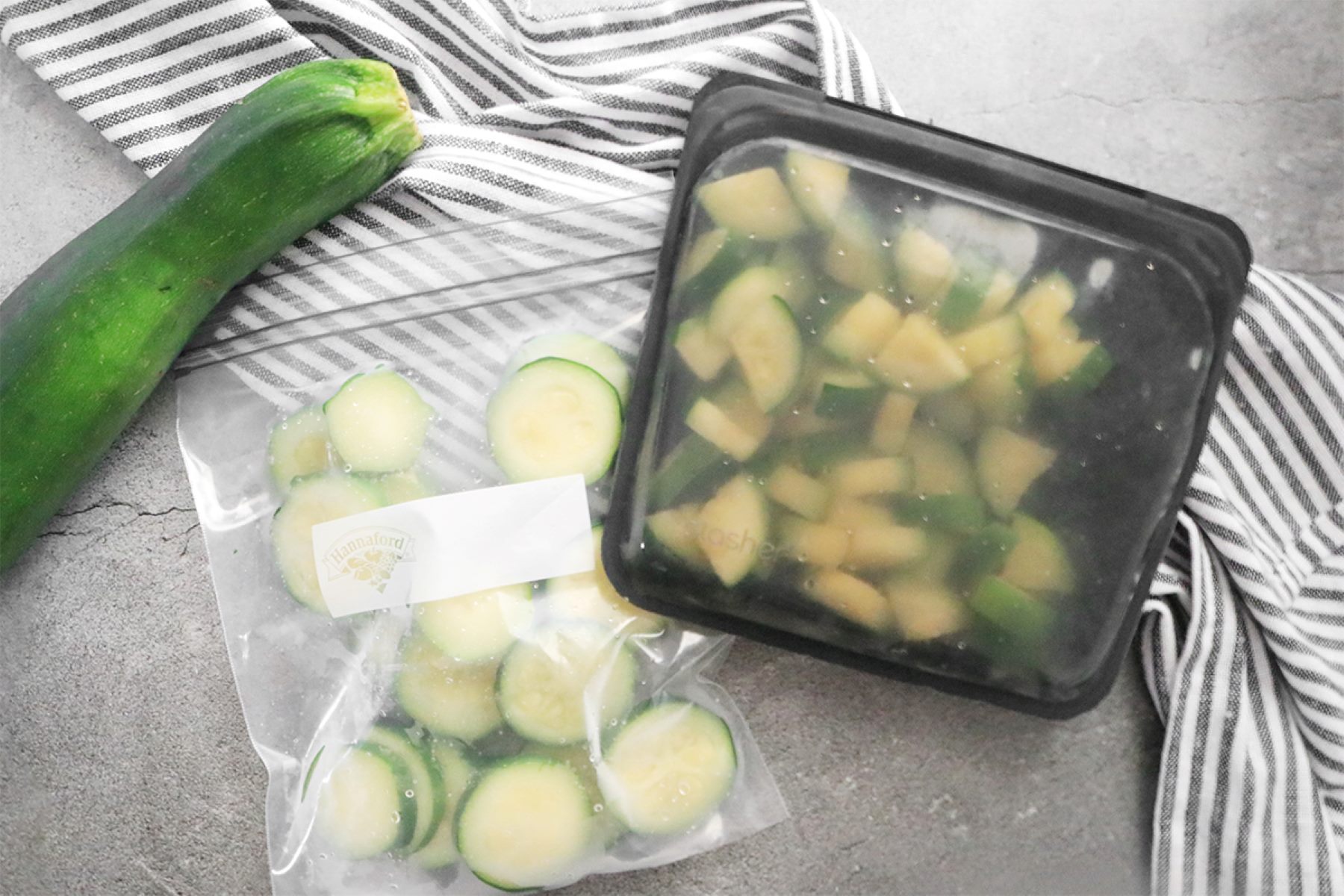
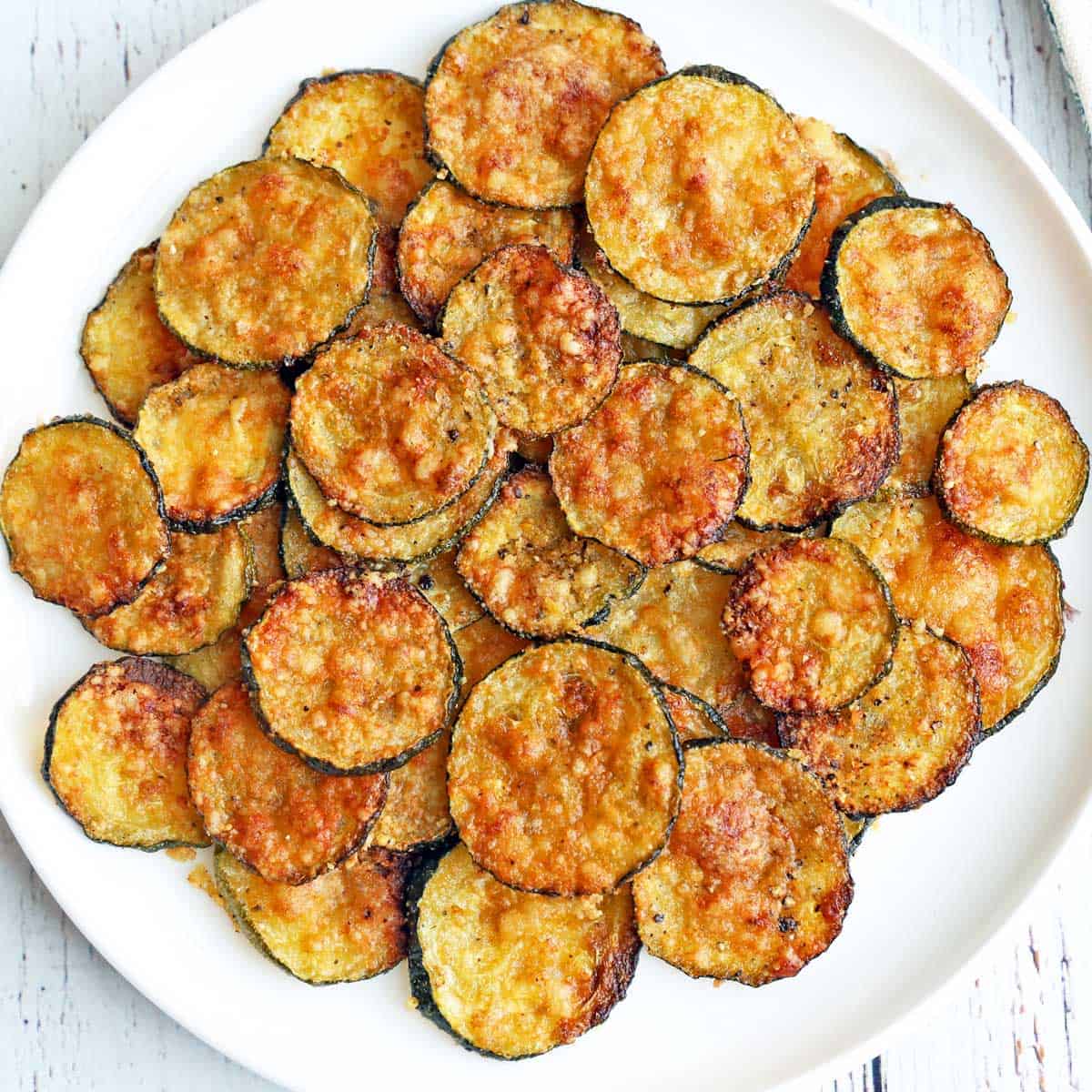
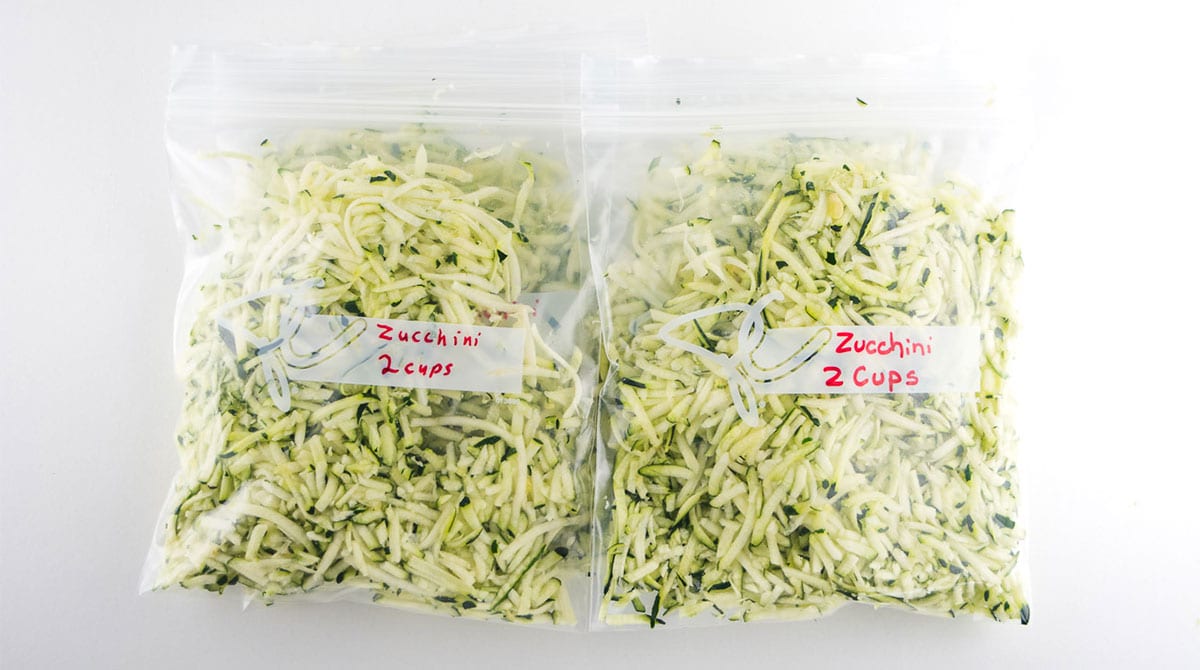

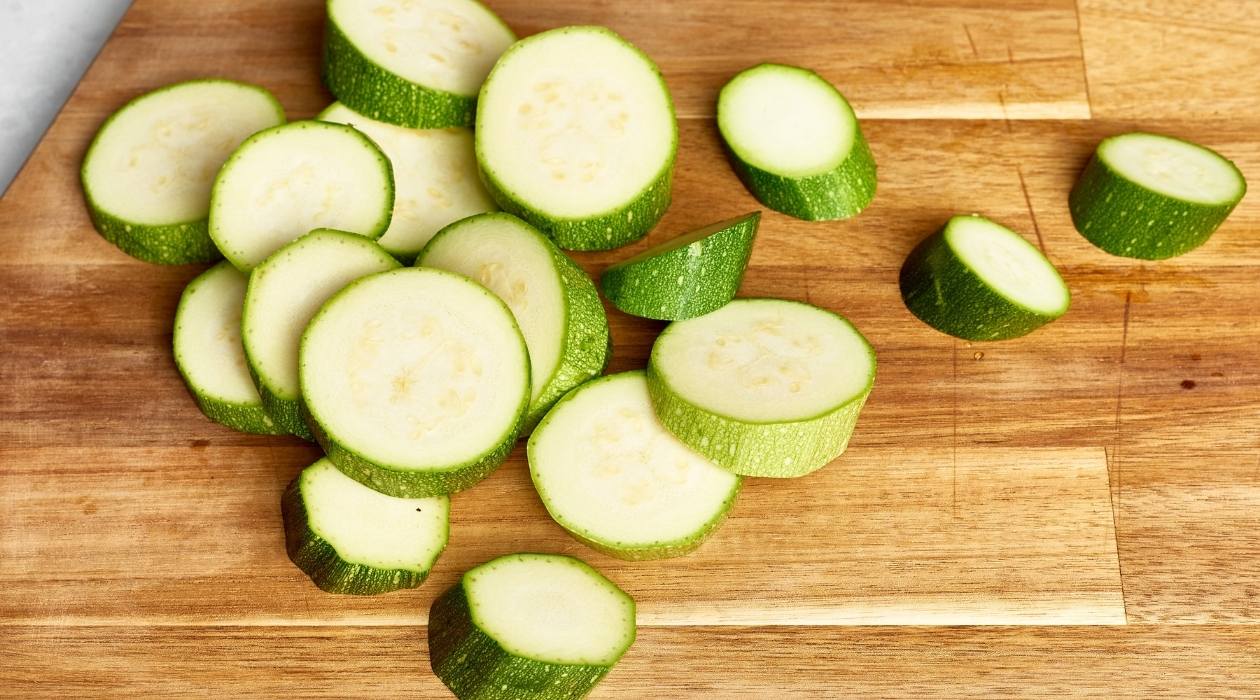
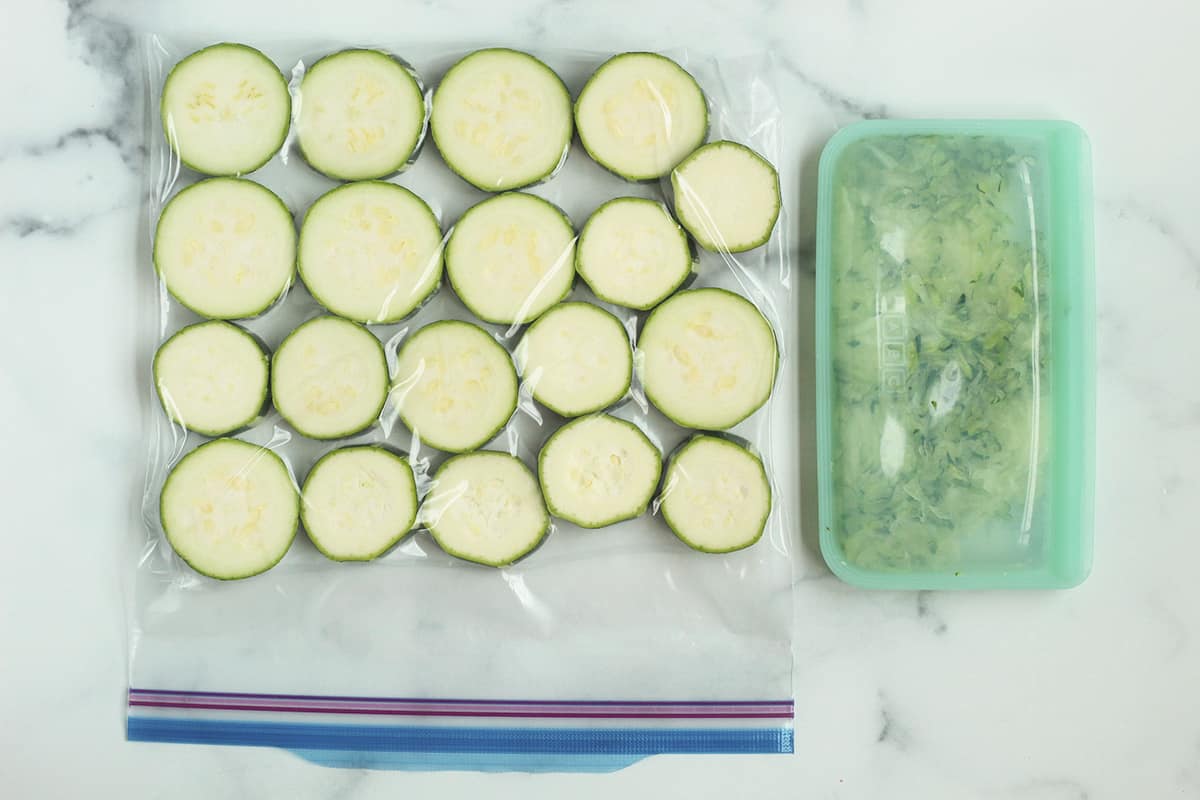

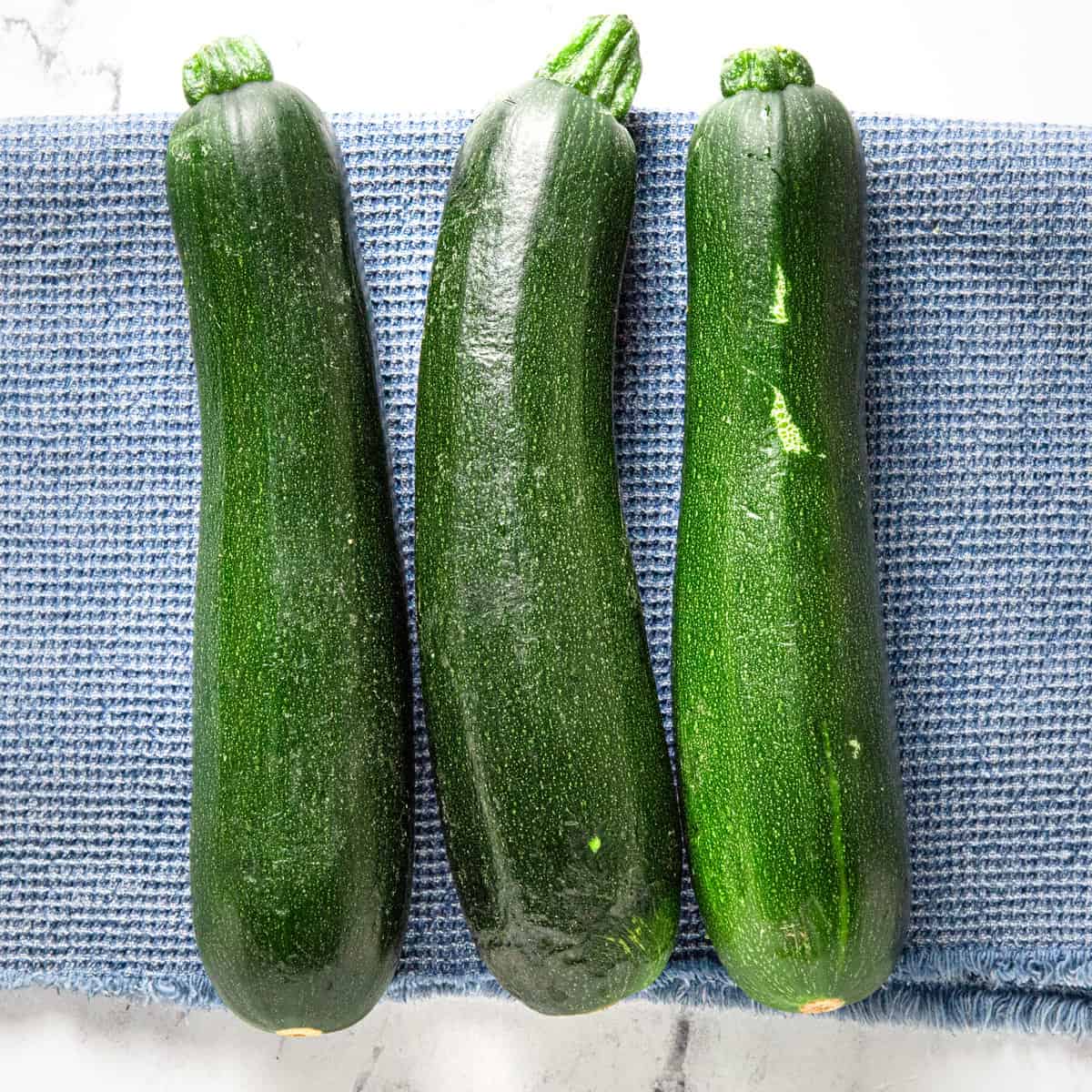
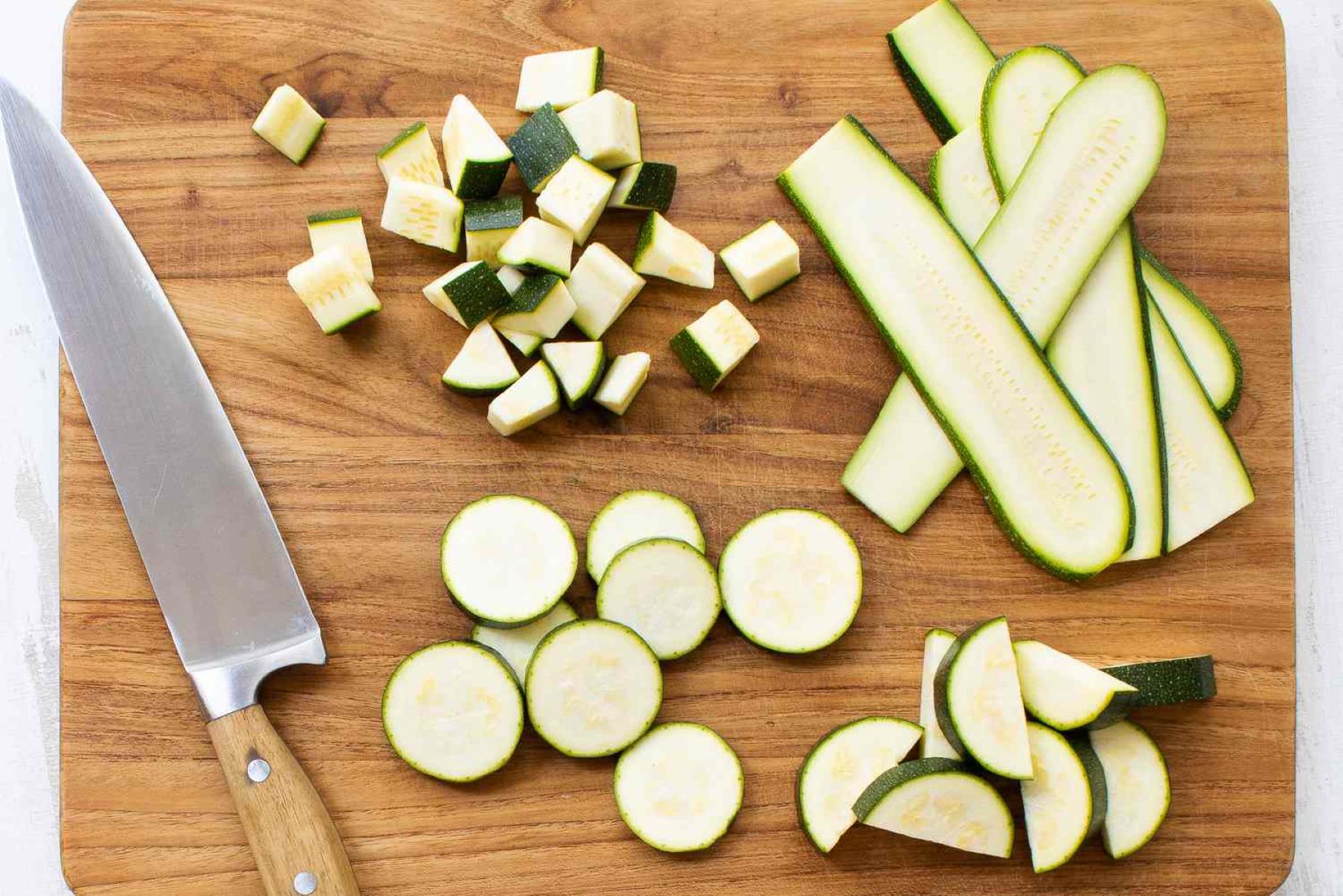
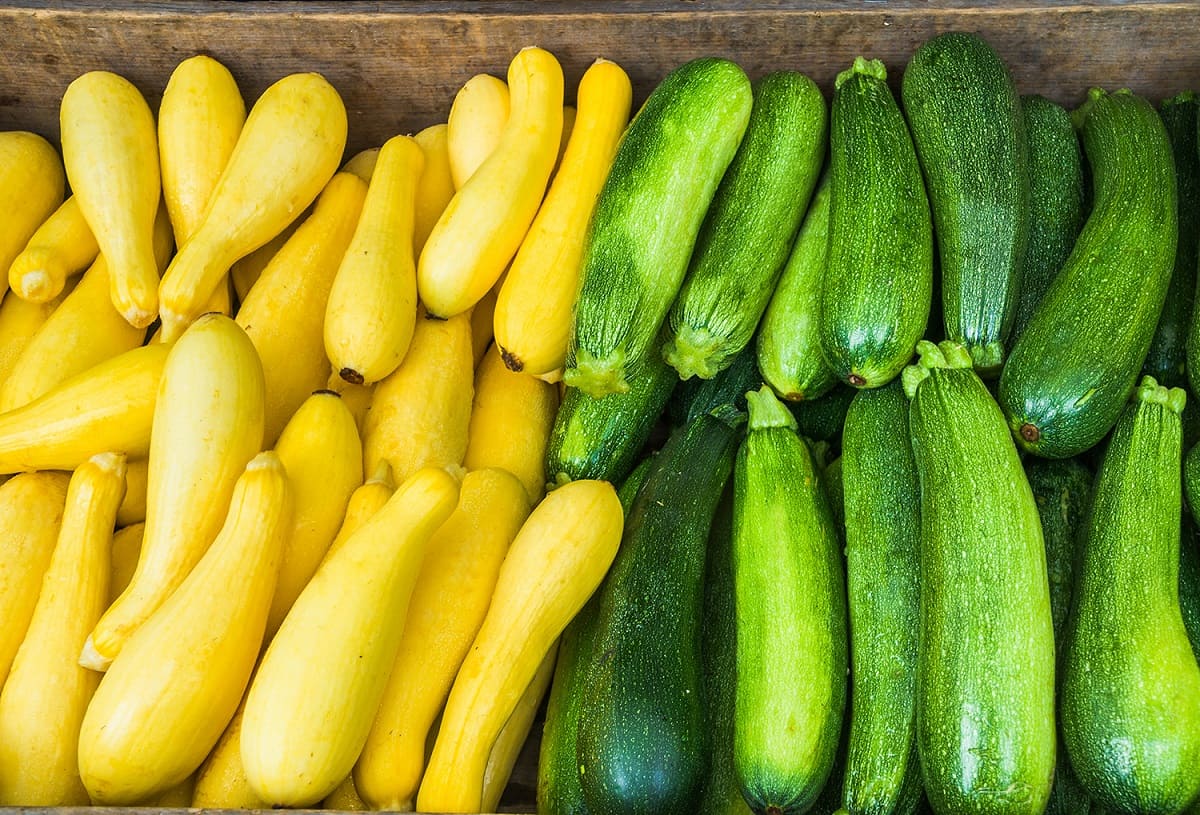
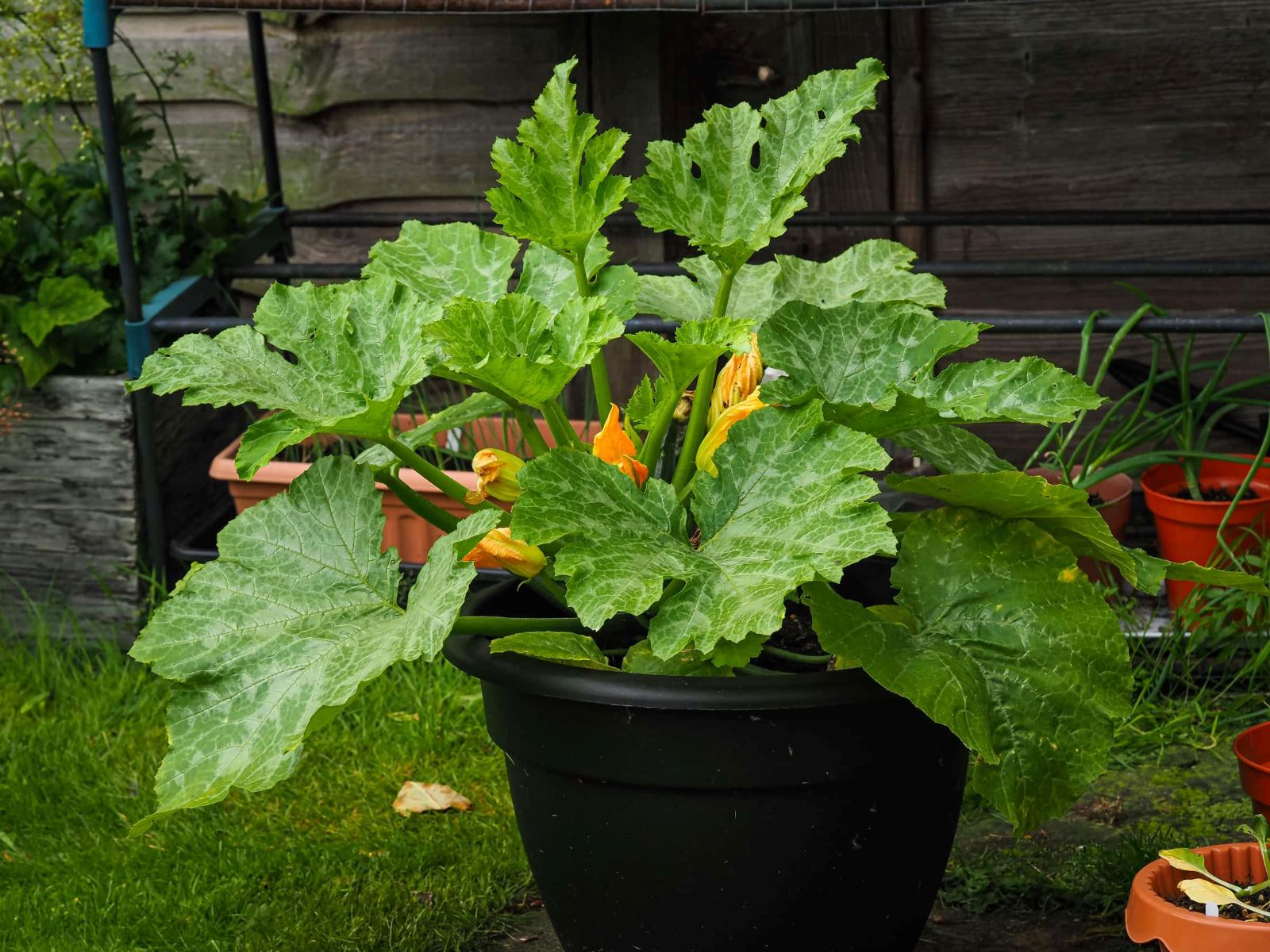
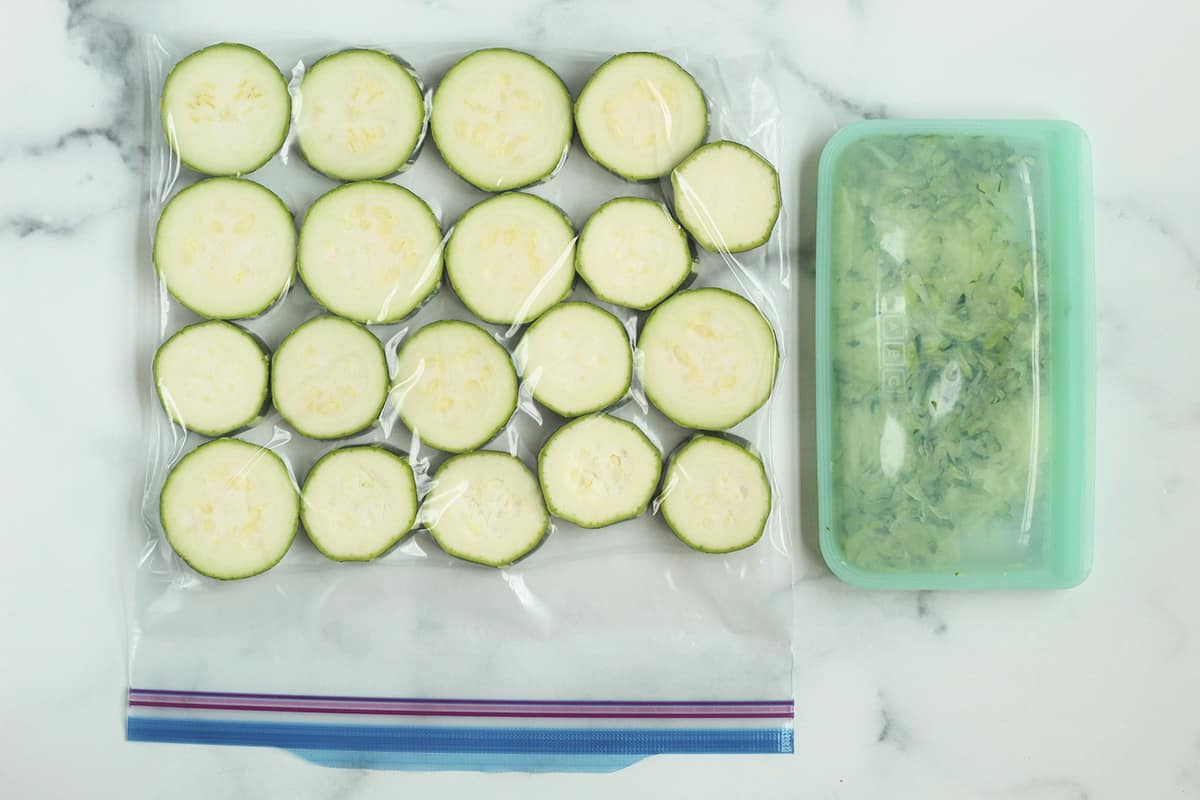

0 thoughts on “How To Store Zucchini In Freezer”